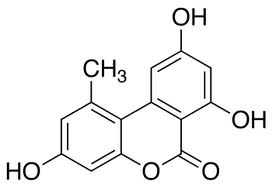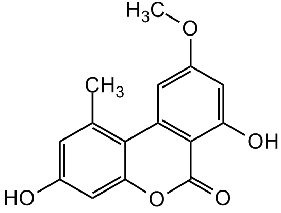Alternariol and Alternariol Methyl Ether

Alternaria species produces many different potent mycotoxins from which the tenuazonic acid, alternariol and altenariol methyl ether are the most common. Alternariol and alternariol methyl ether toxins are commonly found in contaminated cereals and fruits such as tangerines, melons, melons, apples, gooseberries, olives, tomatoes, carrots and others.
Several of the Alternaria species are capable of producing these toxins and have been isolated from Alternaria . tenuissima, A. brassicae, A. capsici-annui, A. citri, A. cucumerina, A. dauci, A. kikuchiana, A. longipes, A. porri, A. solani and A. tomato.
Alternariol and alternariol methyl ether are carcinogenic?, cytotoxic?, fetotoxic?, mutagenic?, teratogenic? , genotoxic? , cholinesterase inhibitors? and also exhibit antifungal? and phytotoxic? activity. Alternariol also been shown to possess DNA strand-breaking activity and inhibits the activity of topoisomerase IIα in mammalian cell models. Altenrariol and alternariol methyl ether as contaminants of animal food can also impair fertility in farm animals.

Alternariol monomethyl ether produced by A. solani was found to be toxic to hamsters when applied intraperitoneally at 200 mg/kg bw, whereas no toxic effects were observed at a dose level of 50 or 100 mg/kg bw. Both alternariol and alternariol monomethyl ether, which are frequently found in combination, were found to be mutagenic .
Research carried out in China on people believed to suffered form a kind of mycotoxins poisoning revealed a strong link between A. alternata contaminated cereal grains and the high occurrence of oesophageal cancer. It is believed that long term exposure to low levels of this mycotoxin could be linked to the development of oesophageal cancer in exposed individuals.
Alternaria mycotoxins
Alternaria species produce more than 70 phytotoxins, but a small proportion of them have been chemically characterised and reported to act as mycotoxins to humans and animals. The most well know Alternaria toxins are:
- Tenuazonic acid
- Alternariol
- Alternariol methyl ether
- Altenuen
This mycotoxins is classified as acutely toxic by inhalation, in contact with skin and if swallowed, may cause harm to the unborn child.
- Altertoxin-I, II, III
Altertoxin II is a much stronger mutagen and DNA strand breaking mycotoxin than alternariol and its methyl ether in cultured mammalian cells it has a mutagenic potential approximately 10 times lower then Alfatoxin B1. In general, altertoxin III is the most mutagenic of the three compounds.

